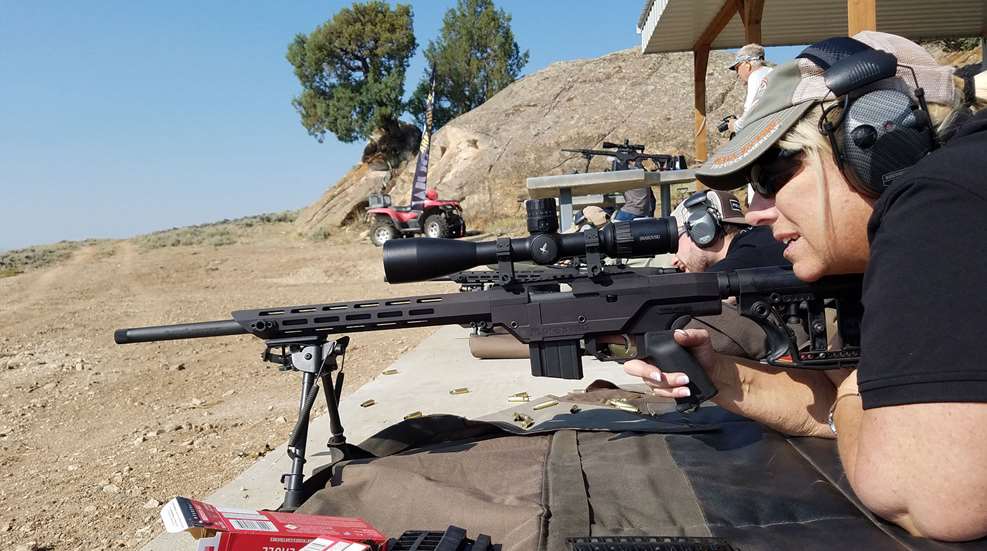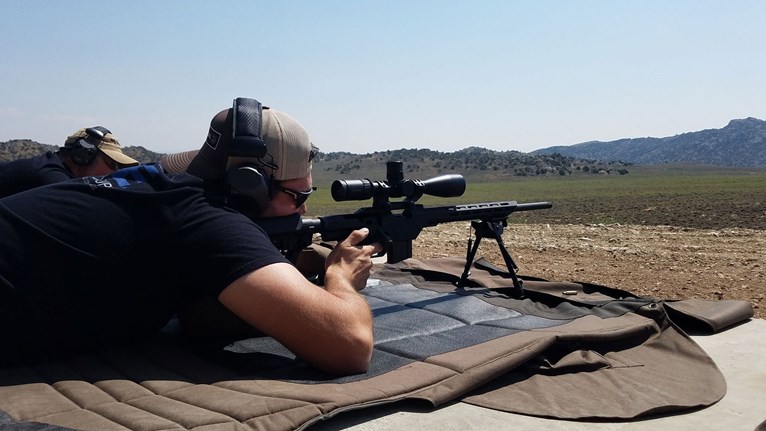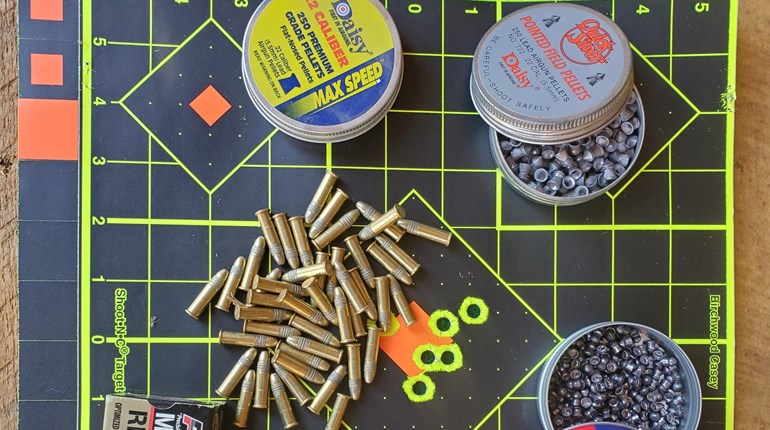
When it comes to long-range precision shooting, we achieve maximum accuracy by removing as many variables from the shot as possible. Fewer variables allow our shots to be replicated consistently, leading to those sub-MOA groups we’re all hoping to achieve.
One of the biggest variables in any shot—at least among the variables that are in our control—is our own body and the degree to which our body acts upon the rifle. Imagine if you could set up a rifle to point at a target, then step away from it and have the trigger pulled mechanically, with no one touching the rifle in any way. That rifle would be at its most accurate, because no human forces were acting on it to introduce variables. But realistically speaking, since our body makes contact with the gun at multiple points during normal shooting conditions, we have to try to keep our contact as neutral as possible to avoid affecting the shot. Torquing with the thumb, tucking in too tightly with the grip hand, and scrunching up the shoulder or rolling the head to get a better view from the scope are all bad habits that cause your body to have too much of an effect on the gun, which translates to an effect on the projectile and the size of your groups.

This is why natural point of aim is such an important aspect of long-range precision shooting. Natural point of aim is the spot your rifle is aiming at when your body is holding the gun and completely relaxed. A body at rest is not acting on the rifle in any way. Natural point of aim is where the gun wants to point based on your body position, but if you’re not set up properly, it might not be where the gun actually is pointing. And that’s a problem.
I’ve taken a number of long-range precision shooting courses at different shooting schools, and if it’s been a while since I’ve last shot prone, it always takes me a while to get comfortable and get my crosshairs on the target. I fiddle and scootch and scrunch up and back and adjust the bipod, the rear rest, the comb and everything else. Then I finally get into a position where I feel comfortable and can see the target clearly through my scope, when the instructor says the words that change everything: “Now close your eyes.”
That’s how you figure out if you’ve found your natural point of aim or not: You get on target, close your eyes, take and release two deep breaths while remaining still, and open your eyes again. If your crosshairs are still on the target where you left them, great—you’ve found your natural point of aim. If they’re not (and mine never are the first time I do this after a few months away from the range), you have work to do.
Leave the gun where it is and move your body into a new position. You must move your whole body, meaning you’ll want to shift your torso, pelvis and/or legs. Do not twist your body, and do not just move your neck, arms or hands or use them to muscle into a different position. The trick is to think in terms of moving your skeletal structure, not your muscles. We want the gun and your body supported by bone-to-ground contact, not by contracted muscles. Bones don’t get tired; muscles do. Muscle tension is inconsistent and leads to fatigue, so the goal is for every muscle in your body to be totally relaxed before you pull the trigger. This isn’t always possible, but it’s a goal to strive for. You can move the rifle if you need to, but for good shooting, the rifle and your body should function as one unit, and when something’s not right, moving only one at a time will keep variables to a minimum while you’re figuring this out.
Admittedly, you can fake it for a while, using muscle tension to hold the gun in position, and you can probably shoot accurately this way. But it won’t last very long, as you’ll tire out, and recoil will knock you out of position with each shot. You’ll have to realign the gun using your muscles again, so follow-up shots will be slower and you’ll have a harder time seeing your hits, as the gun will be pushing you around. By contrast, when you’ve achieved your natural point of aim, the crosshairs will naturally settle back on target after the recoil of the shot.
Achieving your natural point of aim takes practice. As I mentioned, when I haven’t shot prone for a while, it takes me what seems like forever to get there, and it doesn’t always feel as comfortable as I think it should at first. But after an hour or so of shooting, it’s much easier to lay down and snap right into position—the body remembers what it feels like.
In addition to the deep-breath trick, you can also sometimes tell you haven’t achieved your natural point of aim by just taking stock of how your body feels before you shoot. Are you holding your breath? Do you feel tension in your shoulders, arms or anywhere else? When aiming, is there a lot of wobble in the crosshairs that might indicate your muscles are moving the gun around? Do you feel like you’re pushing or pulling the rifle into place? After the shot, do your crosshairs settle way off the target instead of back where they were when you pulled the trigger?
If you’ve answered yes to any of these questions, stop. Make some adjustments to your body position and try again until you are able to see the crosshairs on the target and all of your muscles feel relaxed. It’s OK if this takes what feels like an excruciatingly long time to achieve! It gets easier and easier the more you do it, and it will eventually become almost second nature.
Check your natural point of aim before every shot if you’re able. If you’re in competition or another scenario where time is of the essence, you’d better be practiced up so your body can slip into the natural point of aim position quickly and easily. If you’re engaging multiple targets, keep in mind that the farther apart they are (especially horizontally), the more tempted you’ll be to muscle the gun over to obtain your sight picture. Resist this temptation. If you need to, shift yourself and the rifle as one unit and reacquire your natural point of aim before you engage the next target.
In summary, your body is the platform that supports the rifle. When you achieve your natural point of aim, the body and the rifle are working together as a unit, and the platform (body) will naturally put the rifle’s crosshairs on target. This makes precision shooting easier, more enjoyable and much more consistent.














































